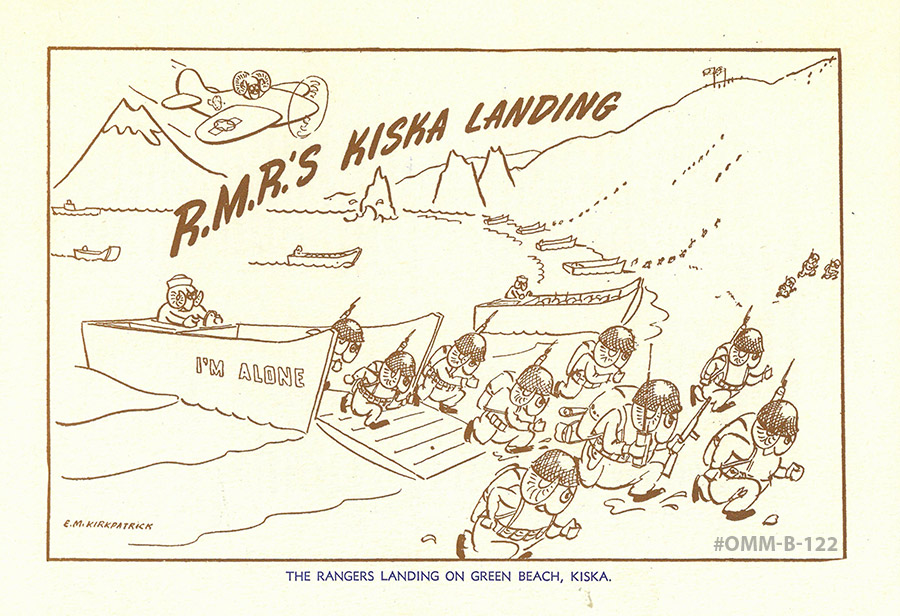Rocky Mountain Rangers
Notes on the Lineage of The Rocky Mountain Rangers
by M. Vincent Bezeau
The Rocky Mountain Rangers originated in five independent infantry companies formed in 1898 along the Canadian Pacific Railway through the Rocky Mountains and down the Kootenay Valley toward the American border.
Regiments + Towns
102nd Regiment, Rocky Mountain Rangers
Armstrong, Kelowna, Penticton, Vernon
The Rocky Mountain Rangers
Armstrong, Enderby, Kelowna, Penticton, Vernon

Early 20th century
In 1908 and 1909, the companies, along with a sixth newly-formed one, amalgamated to form the 102nd Regiment, Rocky Mountain Rangers. This proved too widespread for effective coordination, and the Kootenay Valley companies became non-effective in 1911. In 1912, the regiment amalgamated with an independent company originally formed in 1908 in Armstrong in the Okanagan Valley, and the Kootenay companies disbanded for reorganization. The regimental companies which remained after these changes – two in Kamloops and one each in Revelstoke and Armstrong, along the main railway line and into the Okanagan – were sequentially joined by others in Kelowna in 1913 and Salmon Arm, Vernon and Penticton in 1914 to form a then-standard eight-company organization. The regiment’s Okanagan territory overlapped that of the 1st, later 30th Regiment, British Columbia Horse (now The British Columbia Dragoons), which then stretched from Enderby to Kelowna, and east of Vernon to Lumby.
Post-WWI
After the First World War, the militia regiments reorganized on more modern lines. The 102nd, redesignated The Rocky Mountain Rangers, became a four-company regiment headquartered in Kamloops, with companies in Kamloops, Salmon Arm, Armstrong, and Kelowna. The latter relocated to Revelstoke in 1928, returning the regiment to an earlier geographic coverage.
R.M.R. WWI Battle Honours
- ARRAS, 1917,’18
- AMIENS
- HINDENBURG LINE
- HILL 70
- YPRES, 1917
- VALENCIENNES
WWII
The regiment raised an active-service battalion during the Second World War, originally on west coast defence. It was sent to fight Japanese troops occupying Kiska Island in Alaska – the Japanese withdrew before the American-Canadian assault landing – then transferred to England for reinforcement and training duties. A second battalion, much expanded to cover a larger area, served in the reserve army.
Post WWII
After the war, the regiment shrank back to its prewar size, re-deploying one company to Prince George further up BC’s central plateau. The recruiting area of the regiment fluctuated over the next two decades, until large army reserve reductions gradually reduced the regiment to its headquarters location of Kamloops. There no longer are Ranger sub-units in the Okanagan Valley, although there is still an affiliated army cadet presence in the North Okanagan.
Make History
Or at least help preserve it. Join the Kelowna Museums Society and keep history alive through exhibitions, programming, collections, conservation, and research. Our vision is to inspire a community to be alive with its history – connecting people and place.

